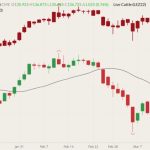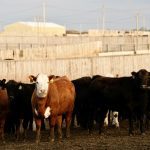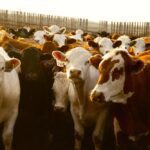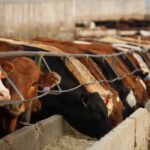World grain and oilseed markets have incorporated a risk premium due to the Russian invasion of Ukraine. Ontario corn, soybean and wheat prices have made fresh historical highs during the first couple weeks of March. This rally comes on the heels of an extremely tight fundamental structure for Ontario grains and oilseeds. Ending stocks are […] Read more

Grain markets reach historic highs in March
Russia’s invasion of Ukraine will affect wheat prices the most moving forward

Klassen: Feeder cattle market experiences volatility
Compared to last week, western Canadian yearling markets traded $2 higher to as much as $5 lower depending on the region. Mid-weight calves weighing 650-800 lbs. were relatively unchanged while lighter weight calves were steady to $3 higher on average. June live cattle are off $9 from their mid-February highs while the December 2022 live […] Read more

Klassen: Surge in feed grain prices shocks feeder cattle market
Compared to last week, western Canadian yearling markets traded $3-$5 lower on average. Feeder cattle weighing 650 to 800 lbs. were relatively unchanged to $3 lower. Calves under 650 lbs. were steady to $4-$6 lower in Alberta, unchanged in Saskatchewan and $3-$5 higher in Manitoba. Fleshier yearlings and calves were heavily discounted last week with […] Read more

Soybean markets poised to respond based on war footing
Corn and soy supplies expect to hit historical lows at end of crop year
Editor’s note: This market analysis was mostly-prepared before the impact of the Russian invasion into Ukraine. As a result, many global commodities are in sway due to a multitude of unforeseen circumstances now in play. Statistics Canada released its Dec. 31 Stocks Report last month. This report is important because it confirms the production estimate […] Read more

Klassen: Feeder market shows resilience
Compared to last week, western Canadian yearling markets traded $2-$3 on either side of unchanged. Calves in the range of 600-800 lbs. traded steady to $4 higher. Calves under 600 lbs. were $1-$2 higher in Alberta and Saskatchewan but traded $2-$3 lower in Manitoba. Alberta feedlot operators appeared to shrug off the geopolitical events last […] Read more

Klassen: Weather factors influence calf prices
Compared to last week, western Canadian yearling markets traded $4 lower to as much as $5 higher. Mid-weight feeder cattle traded relatively unchanged with strong demand noted on steers. Steer calves were firm, trading $2-$5 higher while heifer calves traded $4-$5 on either side of unchanged. The market was hard to define for calves and […] Read more

Risk premium factors in futures market for corn, soybeans
U.S. supply also tighter than anticipated
Two main factors are influencing Ontario corn and soybean prices. First, the futures markets are incorporating a risk premium due to uncertainty in South American production. Drier conditions in Argentina have lowered crop prospects for the row crops. Harvest is in the early stages in Brazil and yields are disappointing. We expect to see lower […] Read more

Klassen: Demand increases for lighter-weight feeder cattle
Compared to last week, western Canadian yearling prices were unchanged to $4 higher. Mid-weight feeders from 660 to 750 pounds traded $2 to as much as $6 higher on average. Feeder cattle in the 550- to 650-lb. range traded $4 to as much as $10 higher. Feeder cattle under 550 lbs. were up $10-$20 depending […] Read more

Klassen: Diverse price behaviour seen in feeder market
Last week’s price action in western Canadian feeder markets was quite variable. Yearling prices were steady to $4 lower on average across the Prairies. Mid-weight cattle were down $3-$4 in Alberta and $2-$4 higher in Manitoba. Calf prices were also mixed. In eastern Saskatchewan and Manitoba, calves traded $2 to as much as $8 above […] Read more

South American soybean production may cause market volatility
Corn prices remain high due to feed demand, wheat in seasonal low
Ontario corn prices are relatively unchanged from last month. All three pillars of corn demand are at seasonal highs. Ontario corn exports are running ahead of year-ago levels while strong energy prices support the year-over-year increase in ethanol production. Cattle on feed inventories tend to peak during the winter. Ontario soybean crushers continue to show […] Read more


